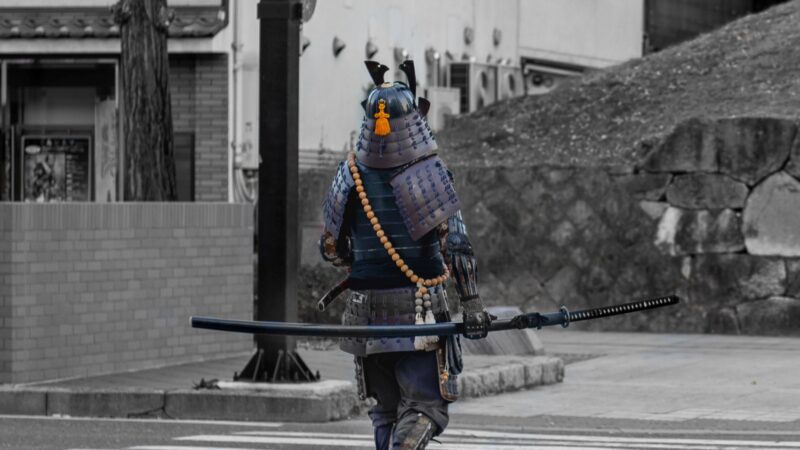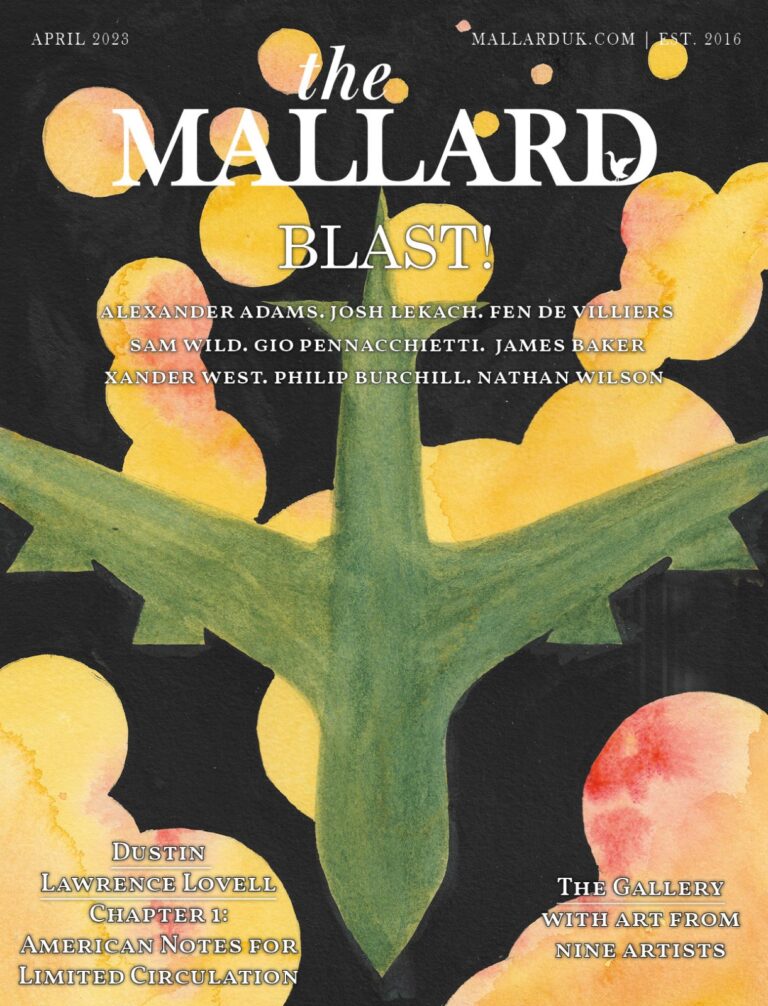Eleanor of Aquitaine
- Life: c.1122-1st April 1244
- Reigned: 19th December 1154-6th July 1189
- Spouse(s): Louis VII of France (m.1137), Henry II (m.1152)
- Children: Two with Louis VIII, eight with Henry Il including Richard I and John
- Parents: William X, Duke of Aquitaine and Aénor de Châtellerault
- Origin: France
Early Life: Eleanor of Aquitaine was born in around 1122 in Poitiers, France. Her parents were William X, Duke of Aquitaine and Aénor de Châtellerault. Eleanor was extraordinarily well-educated, even more so than royal men at the time. She not only learned domestic skills, but her curriculum ranged from language and arithmetic to history and astronomy. The death of her brother and mother led her to become her father’s heir.
William died in 1137, leaving Eleanor the wealthiest girl in Europe at only fifteen. She held more lands than even the King of France. William had been worried about Eleanor being unprotected so made Louis VI of France her protector. Louis knew that Eleanor could bring a lot of wealth to the crown, so decided to marry her off. His eldest son Philip had died several years before so second son Louis had become his heir.
Marriages and Children: Eleanor married Prince Louis on 25th July 1137. They had two daughters, Marie and Alix. Both married noblemen. Whilst Louis was initially besotted with Eleanor, tensions soon rose and their marriage became unstable. The failure of the Crusades, Louis’ weaknesses, Eleanor’s headstrong nature and the lack of sons allowed the marriage to crumble.
Eleanor married Henry II in 1152, only weeks after her annulment. Their marriage was also turbulent and would eventually lead to Eleanor overthrowing her husband.
Her relationship with her children was somewhat better. Eleanor favoured her son Richard above the others but was close enough to each of them. She was able to closely monitor the upbringing of her daughters and ensure the marriages of her children. Richard trusted her enough to be regent whilst being away from England- he only spent six months in his kingdom during his ten year reign.
Pre-Reign and Queenship: They were Duke and Duchess of Aquitaine for about a week before discovering that the King had died. Eleanor chafed in the dull Paris castle that was now her residence, but found that the besotted Louis did anything she asked. She would use that to her advantage.
Louis soon became embroiled in war and scandal. His actions caused the death of thousands and the destruction of land. In 1145, the pair embarked on a Crusade. It was an absolute disaster and Eleanor started pushing for an annulment. The birth of a second daughter left Louis with no sons. Whilst the infertility of a spouse was grounds for annulment, having no sons wasn’t. Instead, they asked for an annulment on grounds of consanguinity as they were third cousins. This worked in 1152 and their daughters were under their father’s custody.
Concerned about her position, Eleanor decided to marry Henry, Duke of Normandy. This pleased Henry, as he was ready to be King of England and needed all the support he could get. They married on the 18th May 1152. Eleanor bore their first child, Henry, less than a year later.
In 1154, King Stephen died and Henry became Henry II. Despite having eight children together, Henry and Eleanor frequently argued. Henry was frequently unfaithful and had bastard children, with Eleanor swinging between annoyed and indifferent. One major conflict occurred when Eleanor was unhappy with the appointment of Thomas Becket as Archbishop of Canterbury. Eleanor was supported by her mother-in-law the Empress Matilda, a formidable woman in her own right.
The chroniclers of the time do not mention Eleanor’s political involvement but one would assume she had her say, despite being consistently pregnant. In 1167, Eleanor moved to Poitiers with her youngest son John. She was over forty at this point and having five sons meant that the succession was secure. Henry escorted her there.
It is said that Eleanor created the idea of Courtly Love whilst in Poitiers but there is no evidence for this. It is known that she encouraged music, literature and the arts. This era of peace ended in 1173 when her son Henry the Young King decided to rebel against his father. He travelled to Eleanor and encouraged his brothers to join him. This year and a half long rebellion ended in disaster.
Eleanor was captured by her husband and brought to England. She spent the next sixteen years as a prisoner. Whilst she was kept comfortably and enjoyed many luxuries, she was still a prisoner. Eleanor was allowed to move somewhat freely after the death of Henry the Young King but always had a ‘chaperone’ with her.
Post-Queenship: Henry II died on the 6th July 1189. Richard, Eleanor’s favourite son, was now king and had her released. With Richard away in England for all but six months, Eleanor was trusted to run the kingdom. She raised the ransom for Richard when he was captured in 1192. When Richard died, Eleanor was tasked with marrying off her granddaughters.
Eleanor retired to a convent before her death in 1204. She’d lived until her 80s, extremely unusual for the time. Eleanor had outlived all but her two of her children as well as both husbands. She is buried with her husband and Richard.
Personality: As a person, Eleanor was extremely intelligent, academic, strong-willed and headstrong. Her toughness outshone the weakness of her husbands. Eleanor was a good mother to her children but was ready to anger her husbands. She was a trusted ruler in her own right.
Legacy: Eleanor of Aquitaine is remembered as one of the most famous Queens of England. Her push to overthrow her husband did fail, but her strength is remembered. She has been commemorated on stage and screen, most famously by Katharine Hepburn in The Lion of Winter. Two of her sons would become King and her daughters married into nobility.
Margaret of France
- Life: 1158-18th September 1197
- Reigned: 27th August 1172-11th June 1183
- Spouse(s): Henry the Young King (m.1170), Béla III of Hungary (m.1186)
- Children: William with Henry the Young King
- Parents: Louis VIII of France and Constance of Castile
- Origin: France
Early Life: Margaret was born sometime in 1158 to Louis VIII of France and Constance of Castile. Her father had previously been married to Eleanor of Aquitaine so she shared half-sisters with her future husband. Louis cared deeply for his wife Constance and was devastated by her death, but married again only a month later as he’d been desperate for a son.
The birth of Louis’ son and Margaret’s half-brother worried Henry II, so he had his son Henry betrothed to Margaret.
Marriages and Children: Henry and Margaret married in around 1170. When Henry was crowned Junior King in 1170, she was not crowned with him. This infuriated Louis, so Henry II had Margaret crowned in 1120 to pacify him.
We know little of Henry and Margaret’s relationship. It’s believed Henry may have wanted an annulment in regards to her apparently infertility. What they were like as a couple is unknown.
Margaret bore one child, William, when she was about nineteen. He died a few days later. His birth seemingly left Margaret unable to have any more children.
Margaret remarried in 1186 to Béla III of Hungary. We do not know what their relationship was like.
Queenship: Henry was never officially king, so Margaret was classed as a Junior Queen. Rumours circulated that she was having an affair but this is highly unlikely. We know next to nothing about her reign and it doesn’t look as though she had any real power.
Margaret was widowed in 1183.
Post-Queenship: Margaret, still young, married in 1186. Her new husband was Béla III of Hungary, making her the Queen of Hungary. She bore him no children though he already had heirs, so it was not as important. He died after ten years of marriage. Margaret died a year later aged about thirty-nine. She is buried in the Cathedral of Tyre, Lebanon, though it no longer stands.
Personality: With almost no historical records, we know nothing of Margaret as a person.
Legacy: Again, lack of records means that Margaret has no lasting impact. Many do not know that she was even a Queen (kind of). As she had no living children, she is not an ancestor of any royals.
Berengaria of Navarre
- Life: c.1165-1170-23rd December 1230
- Reigned: 12th May 1191-6th April 1199
- Spouse: Richard I (m.1191)
- Children: None
- Parents: Sancho VI of Navarre and Sancha of Castile
- Origin: Spain
Early Life: Berengaria was born between 1165 and 1230 to Sancho VI of Navarre and Sancha of Castile. She was the eldest of six children. There is no information on her early life so we do not know anything about it. The only thing we know is that Berengaria met her future husband Richard at a tournament years before their betrothal.
Marriage: Richard’s mother Eleanor of Aquitaine promoted an alliance with Navarre due to its strategic locations. He had been engaged to the sister of the French king, but his own father had taken her as a mistress so the engagement was broken off. Alys, the princess, was the half-sister of Richard II’s half-sister.
Richard and Berengaria wed on the 12th May 1191. She was in her early to mid twenties, which was very old for a noble bride of the era. The pair rarely spent time together due to Richard’s role in the Crusades and his apparent disinterest in his bride. They had no children, believed to be down to either infertility or lack of time together. Some believe that the marriage was never actually consummated.
Queenship: Berengaria joined Richard in the Holy Lands following the wedding. The failure led Berengaria and her sister-in-law Joan to head back to France. It would be another three years before husband and wife saw each other again. Berengaria spent her time in France during her husband’s captivity, helping her mother-in-law raise the ransom. She continued to live there upon Richard’s release as he returned to England and then shored up his lands on the continent.
The Church was angered at Richard seemingly ignoring Berengaria and the Pope told him to reconcile with her. Once Richard was finished with his business, he returned to Berengaria. He’d accompany her to church once a week but they still did not have a child.
Post-Queenship: Richard died on the 6th April 1199, leaving Berengaria a widow. She was not at his bedside upon his death and had not even been summoned by Eleanor of Aquitaine. Berengaria retired to her dower lands, but found that most of them had been seized by John. She asked her mother-in-law and the Pope to intercede on her behalf. They did, but Berengaria would only be paid back upon the ascension of John’s son.
Berengaria entered a convent in 1129 and died one year later. She was buried in Les Mans but her burial place has been moved more than once.
Personality: We know extremely little of Berengaria. One contemporary called her ‘elegant and prudent,’ whilst noting her musical talent. She joined her husband on the Crusades, so she was likely a tough and devout woman.
Legacy: Berengaria is barely remembered to this day. She is called the only English queen to never enter the country, though she likely visited after her husband died. Berengaria did not have any children that would go on to be ancestors of Europe.
Isabella of Angoulême
- Life: c.1186/1188- 4th June 1246
- Reigned: 24th August 1200-19th October 1216
- Spouse: John (m. 1200), Hugh X of Lusignan (m. 1220)
- Children: Five with John, including Henry III, and nine with Hugh
- Parents: Aymer, Count of Angoulême and Alice of Courtenay
- Origin: France
Early Life: Isabella was born around 1186-1188 to Aymer, Count of Angoulême and Alice of Courtenay. She was the only surviving child of her parents but little else is known about her early life. Through her mother, she was related to the French monarchy. She was originally engaged to Hugh IX of Lusignan and was sent to his court.
Marriages and Children: John of England had previously been married to Isabel of Gloucester. Their marriage was annulled on grounds of consanguinity, they were so closely related that they weren’t allowed to have sex. John cast his eye on Isabella for two reasons: her renowned beauty and to prevent her from marrying the powerful Hugh.
John was besotted by Isabella and reportedly neglected his duties to be with her. She was a high-spirited and headstrong woman with a personality to match his own. Unfortunately, John was also cruel and took mistresses. He blamed Isabella for his own failures.
They had five children together, the first born seven years after their marriage. Henry III would be King of England, Richard King of Rome, Joan Queen of Scotland, Isabella Holy Roman Empress and Eleanor, a prominent noble.
Queenship: Isabella did not have the most enjoyable time as Queen. Hugh of Lusignan was not thrilled about John having stolen his fiancée and kicked up a stink. The King of France then took John’s French possessions and gave them to Hugh. John blamed this on Isabella, despite him having pushed to marry her. Isabella was blamed by the elites for John’s misadventures despite her being a child. They called her a seductress and a Jezebel.
In 1203, Isabella’s castle was besieged by rebels. John set out to rescue her but was scared of being captured himself, so he sent out a force. A year previously, he’d personally rescued his mother. She would spend most of the years from 1207 pregnant. Her children would be raised away from her and she wasn’t allowed a government role. Whilst John abducted noblewomen and had illegitimate children, rumours of Isabella’s adultery made her extremely unpopular.
Post-Queenship: Isabella was forced to live under guard as French forces made ground in England. On the 18th October 1216, John died. This may have been a relief for Isabella on a personal level but her son was still underage. In order to cement her son’s claim, Isabella took him to Gloucester and had him crowned. Her unpopularity meant that she was not part of his regency council.
Isabella then headed to France to take control of her lands. Her daughter Joan was engaged to Hugh IX’s son Hugh X and had been sent to live at their court. When Hugh X saw Isabella, he decided to marry her instead. Joan was promised to the King of Scotland. The English were furious that Isabella had not sought their permission and took away her dower lands. Isabella retaliated by threatening to keep Joan in France. Alexander of Scotland wanted his bride, so a settlement was reached.
Isabella would have nine children with Hugh. This marriage was likely better for Isabella as Hugh included her in governance and both of their signatures were found on documents. She did not have a good relationship with the sons from her first marriage, especially as it was decades before she saw them again. Isabella also resented having to defer to other women even though she was the former Queen.
After being snubbed by the King of France’s mother, Isabella started plotting against him. After she was implicated in an attempted poisoning, Isabella fled to an abbey for protection in 1244.
Isabella died on the 4th June 1246, aged between 58 and 60. She was little mourned in England, but her son did ensure she was moved from the abbey to be buried with his grandparents.
Personality: Isabella was a strong and tenacious woman who didn’t hesitate to get what she wanted. Contemporaries called her a Jezebel and overly ambitious, blaming her for affairs that may not even have happened. Isabella was also very young at the time. She ultimately wanted some happiness after being married off as a child bride and blamed for her husband’s misdeeds. Though contemporaries may have been overly critical of her, Isabella did steal her daughter’s fiancé and threatened to keep her away. She also left her children to look after themselves.
Legacy: Isabella is poorly remembered due to her apparent poor behaviour and being a seductress. We must remember that women of the time were overly blamed for everything and that she was also a CHILD at the time. Isabella did her duty in that she provided an heir and all of her royal children married well.
Eleanor of Provence
- Life: c.1223-24/25th June 1291
- Reigned: 14th January 1236-16th November 1272
- Spouse: Henry III (m.1236)
- Children: Five, including Edward I
- Parents: Ramon Berenguer IV, Count of Provence and Beatrice of Savoy
- Origin: France
Early Life: Eleanor was born in Provence in about 1223 to Ramon Berenguer IV, Count of Provence and Beatrice of Savoy. She was the second of four sisters, all of whom would marry kings. Margaret would become the Queen of France, Sanchia Queen of Germany and Beatrice Queen of Sicily. Sanchia’s husband was Henry III’s younger brother.
It seems that Eleanor was well-educated, with a zeal for reading and poetry. Little is known about her early life, though it’s known her father was a generous and shrewd man, whilst her mother was very intelligent.
Marriage and Children: Eleanor’s family worked to marry her off to Henry III. Henry had been king for ove twenty years after attaining the throne at a young age. It worked and Eleanor set off to England, marrying Henry on the 14th January 1236.
The two enjoyed a loving marriage. Eleanor was intensely loyal to her husband and Henry is not believed to have had any mistresses, a rarity for the time. They spent a lot of time together and Henry trusted Eleanor to act as regent. Discord did occur when Eleanor attempted to intervene in favour of an uncle, causing Henry to banish her from court and seize her lands. They eventually reconciled.
Eleanor and Henry would have five children, four of whom lived to adulthood. Their eldest son Edward would become Edward I and daughter Margaret would wed the King of Scotland. She seemed to have a good relationship with her children and was instrumental in their upbringing. The pair were devastated when their daughter Katherine died at only three years old.
Queenship: As Queen, Eleanor set out to bring a cultural renaissance to England. She likely found England dull and dry compared to her home. Eleanor encouraged literature, poetry and the arts. She was also seen as fashionable and brought many new trends over from the continent. On top of that, Eleanor enjoyed gardening.
Unfortunately, Eleanor was deeply unpopular. She tended to be interested and involved in politics, which was seen as unbecoming for a Queen and a foreigner. Eleanor also brought a large retinue with her, angering the people and those at court. The nobles at court were worried about foreign influence, whilst the common people worried about cost. Eleanor was once booed and pelted with food as she headed through London. She also invited unpopularity with her lands and willingness to tax.
Post-Queenship: Henry III died on the 16th November 1272. Eleanor was not active politically as Dowager Queen, instead focusing on her family. She helped raise her grandchildren, including Edward’s son Henry. So close was their relationship that Eleanor tended to Henry during his illness and was with him when he died at the tender age of six.
In 1286, Eleanor followed the trend of many queens and retired to a convent. She lived there with two of her granddaughters.
Eleanor finally died in June 1291. She was buried in an unmarked grave and is thus the only Queen whose burial place remained unknown.
Personality: Eleanor was principally a lover of the arts, with poetry being her greatest joy. She was also a deeply loyal wife and loving mother, enjoying a mutually faithful relationship with her husband. Eleanor also cared deeply for her grandchildren. She was intelligent and erudite, enjoying the privilege of being her husband’s regent when he was abroad. Surviving letters show a sense of compassion. Unfortunately, Eleanor could be ruthless. She was happy to tax her subjects highly, hated the Londoners and expelled all Jews from her lands.
Legacy: Eleanor is primarily remembered for her cultural and fashionable activities, particularly poetry. Many letters from her survive, which give historians a great insight into Eleanor as a person.




